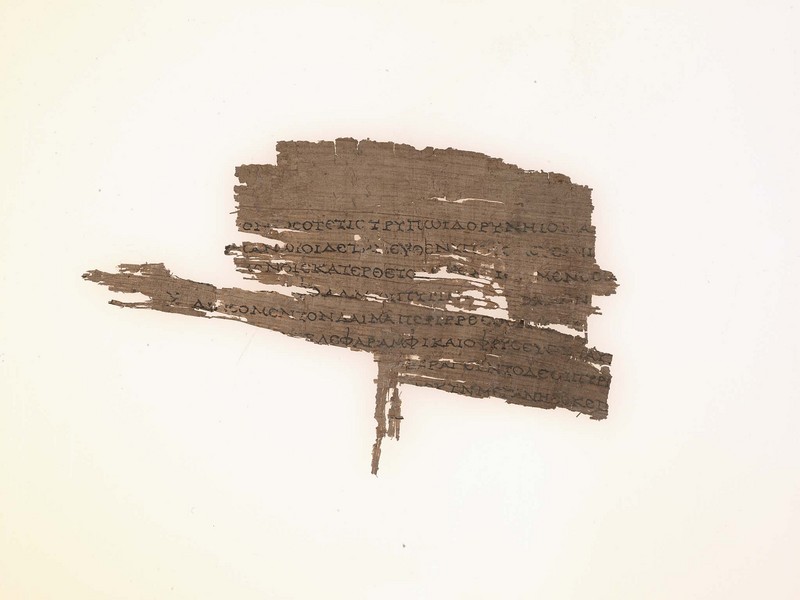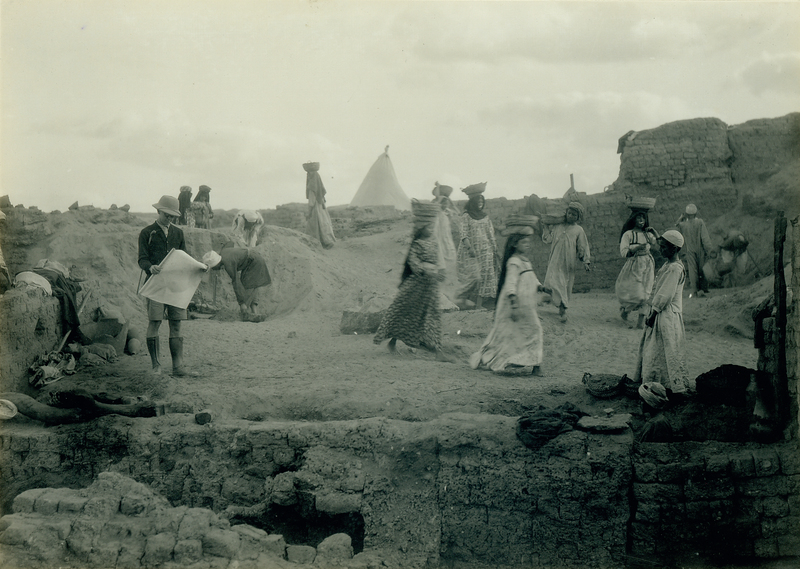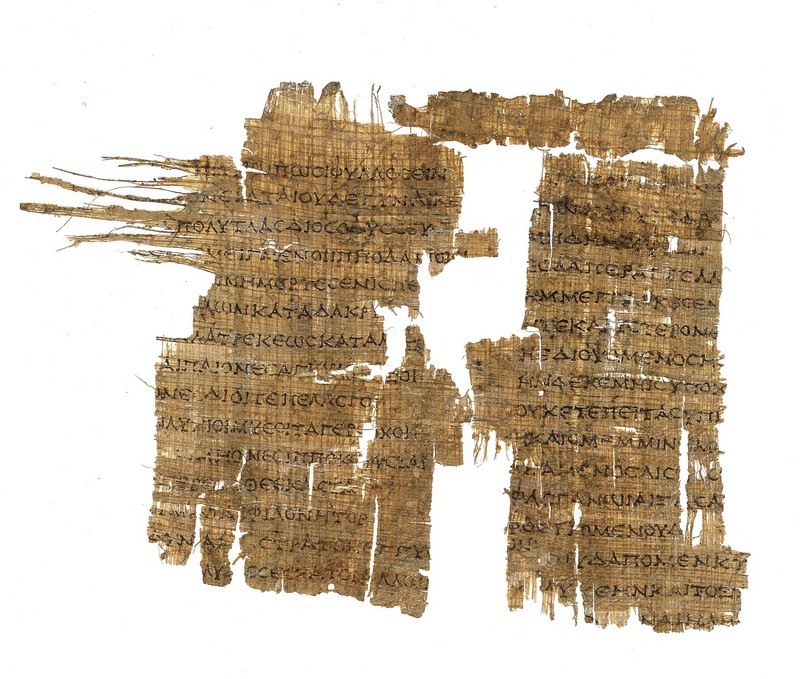Papyri of the Iliad
Some of the manuscripts displayed in this exhibit were discovered in the ancient village of Karanis, Egypt, where Francis Kelsey, Professor of Latin at the University of Michigan, led excavations that began in 1925. Located on the northeastern edge of the fertile area known as the Fayoum and about 50 miles southeast of Cairo, Karanis became an extraordinary source for scholars not only for papyri but also for artifacts documenting daily life in Graeco-Roman Egypt.
This fairly large fragment was originally part of a papyrus roll containing book 18 of the Iliad in 14 columns with around 44 lines per column. Parts of 11 columns survive, five of which can be seen in a continuous succession here. The structure of this fragment clearly confirms the notion that, in the Roman period, a papyrus roll would have contained at least one book. Regarding the handwriting, scholars have determined that it was written by two scribes. The main scribe wrote all the columns, while the second one concentrated on making corrections, particularly adding missing marks like accents
This is the earliest papyrus fragment containing a text of Homer that is held in the Papyrology Collection at The University of Michigan Library. Scholars designate this type of papyri as belonging to the “eccentric” class of Ptolemaic papyri. In brief, it means that these papyri predate the establishment of the model for our Vulgate text. Thus, eccentric papyri contain those corruptions and extra elements that were eventually eliminated by the Hellenistic scholars working at the Library of Alexandria in the second century B.C.E. These impurities are additional lines, omission of lines, and variants that are not preserved in the Vulgate or in other scholarly editions.

Listening to Homer

Papyri of the Odyssey




